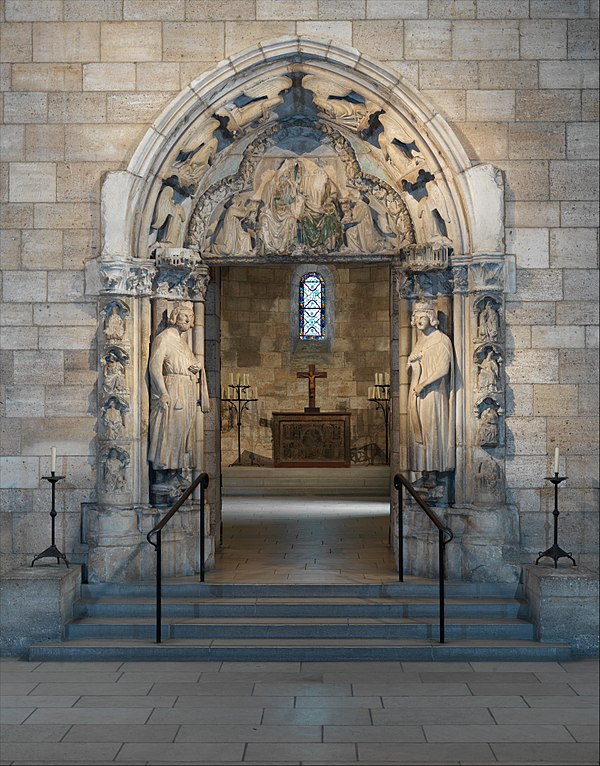Moutiers-Saint-Jean Abbey
From Wikipedia, the free encyclopedia
Moutiers-Saint-Jean Abbey (from Latin monasterium sancti Johannis, French: Abbaye de Moutiers-Saint-Jean, also Abbaye Saint-Jean-de-Réome) was a monastery located in what is now the village of Moutiers-Saint-Jean (named after the monastery) in the Côte-d'Or department in eastern France. It is in Burgundy, northwest of Dijon.

The monastery was founded by a monk named John de Réôme around 450. In the seventh century, during the abbacy of Chunna (Hunnanus), a monk from Remiremont, the original monastic rule, which had been that of the ancient saint Macarius of Alexandria, was replaced by that of Luxeuil, founded by the Irish missionary Columbanus.[1] When Jonas of Bobbio stayed at the monastery in 659, during Chunna's abbacy, he was compelled by the monks to write a biography of their founder. The result was the Vita Iohannis.[1]
In 816–17, Saint-Jean was reformed according to the synods of Aachen. According to the record of monasteries made around that time, it owed the Carolingian state annually both a monetary gift (dona) and a military contribution (militia).[2]
The abbey became a major center of influence, by kings and nobles over the centuries; at one time it was financed by the dukes of Burgundy.[3] Moutiers-Saint-Jean was sacked, burned and rebuilt a number of times; in 1567 the Huguenot army struck off the heads of the two kings on the main doorway.[4] In 1797, after the French Revolution, the entire building was sold as rubble for rebuilding. It lay in ruin for decades, with the sculpture severely defaced, before the Doorway from Moutiers-Saint-Jean was bought from the landowner and moved to New York in 1932, where it is now in The Cloisters museum.[5] Some Romanesque capitals, probably from the nave of the church, are in the Fogg Art Museum, the Louvre, and in the collection at Bard-les-Epoisses. Two spandrels from an arcade are held by the Davis Museum at Wellesley College.[6]
The remains of the abbey (the 14th-century main gate, the facades of two 17th-century buildings, the grounds of the abbey and the abbey church) are protected by the French government.[7]
See also
Notes
Sources
External links
Wikiwand in your browser!
Seamless Wikipedia browsing. On steroids.
Every time you click a link to Wikipedia, Wiktionary or Wikiquote in your browser's search results, it will show the modern Wikiwand interface.
Wikiwand extension is a five stars, simple, with minimum permission required to keep your browsing private, safe and transparent.
